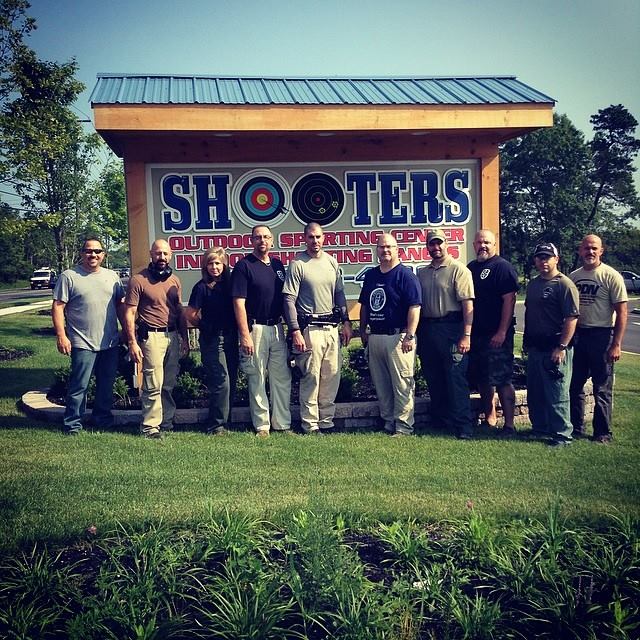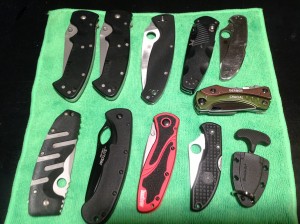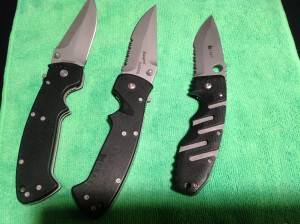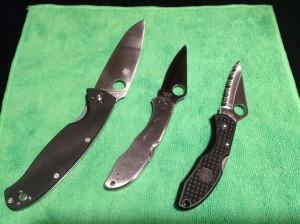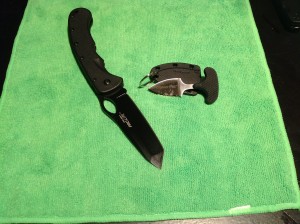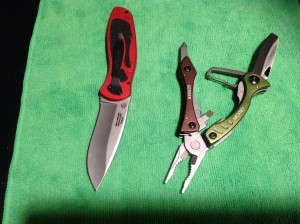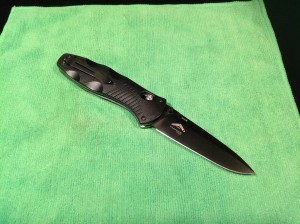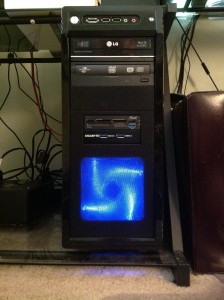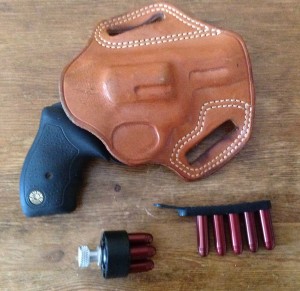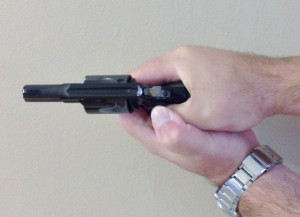 In a response to the hacking of a number of celebrity phones and backup data, Apple will reportedly add a new security service to the iPhone 6 and add features to IOS 8 to help prevent future compromises of celebrity data. One of the fixes will be to assign an Apple fanboy to attractive celebrities who will turn off photostream for them and enable 2 factor authentication. The fanboy will change their “monkey” based password to something not in a dictionary and incorporate special characters to increase entropy. Changes to IOS 8 will include not allowing real answers to security questions and a new app called iNude. The iNude app will analyze photo’s taken and send notifications when skin percentages exceeds 50%. The notifications will say” “Do you really want to put this on the internet?”, “What would your mother think if she saw this?”, “This is really not your best look, wait till you’re sober and look again.”, or “Go ahead, you’re career is tanking anyway.” Industry insiders say these changes will make Apple devices the most secure in the world and anyone who doubts that is a hater and a douche-bag anyway.
In a response to the hacking of a number of celebrity phones and backup data, Apple will reportedly add a new security service to the iPhone 6 and add features to IOS 8 to help prevent future compromises of celebrity data. One of the fixes will be to assign an Apple fanboy to attractive celebrities who will turn off photostream for them and enable 2 factor authentication. The fanboy will change their “monkey” based password to something not in a dictionary and incorporate special characters to increase entropy. Changes to IOS 8 will include not allowing real answers to security questions and a new app called iNude. The iNude app will analyze photo’s taken and send notifications when skin percentages exceeds 50%. The notifications will say” “Do you really want to put this on the internet?”, “What would your mother think if she saw this?”, “This is really not your best look, wait till you’re sober and look again.”, or “Go ahead, you’re career is tanking anyway.” Industry insiders say these changes will make Apple devices the most secure in the world and anyone who doubts that is a hater and a douche-bag anyway.
This Summer marks the centennial of The Great War starting in 1914. As an amateur historian I have been interested in WW I since grade school looking at books on weaponry in the local library. As a teenager I read “All Quiet on the Western Front” and discovered that maybe war wasn’t all John Wayne in “The Sands of Iwo Jima” or more appropriately, “Sergeant York” with Gary Cooper. As my interest in military history grew and I delved into warfare from ancient to modern, I came to the conclusion that the 20th century and now the 21st has been cast from the blast furnaces that consumed millions of soldiers and civilians across the globe from 1914-1918.
The causes of the war are more complex than an anarchist’s bullet. Max Hastings gives a blow by blow account of all the government actions and decisions in “Catastrophe: 1914.” In “Europe’s Last Summer” David Fromkin treats the causes as a murder mystery and calls out the principal antagonists as Austro-Hungary vs. Serbia and Germany vs. Russia with their varied alliances drawing in the other European nations. Understanding how such a group of “civilized” countries became embroiled in a costly war is crucial to understanding our own times and the conflicts we have seen and that continue on a depressingly regular basis.
From my personal perspective, I see WW I as a failure of men to appreciate or comprehend that the technological progress of the industrial revolution should have brought about a commensurate change in attitude towards class, empire and the role of government. Nationalism was on the rise. Colonialism was being attacked as exploitive and even racist. The race for European countries to acquire geo-political property wherever they could was ending. After the war, few could afford to maintain them. The saga of India and Indo-China are just a couple of examples that had far reaching ramifications for their colonial masters. Robber Barons vs. the trade unions was fraying the social fabric. Progressive movements initiated the English welfare state. Women were enfranchised in Finland and Sweden before the war, and not until 1928 were all women allowed to vote in England. My point is that the early 20th century had the making of a new Renaissance. Science, technology, art, literature, music all were advancing, but it seems our destructive human nature, our “will to power,” won out. Dr. Paul Kengor uses a religious metaphor and makes the case for the conflict as “the second fall of man.(“wwi-and-the-second-fall-of-man)
Much talk is made of new weapons of war being used with old tactics and the subsequent slaughter. I think the same thing occurred with respect to the diplomatic and government decision making process. Where once messages and ultimatums would takes days or weeks to arrive by courier they were now delivered by phone or telegraph. Time to think, strategize and prepare measured responses was greatly reduced by technology. This improved technology also allows mass communication to become more effective. An informed (or misinformed) public makes for public pressure on government officials, politicians and at this time even kings or queens.
In my FBI crisis negotiator trainings there was a warning we always heard: “Beware the Action Imperative!” When in a crisis situation, say after an archduke and his wife are murdered (or a group of militants declare an Islamic State in a country you just “freed”), people feel a need to do something. Action of some kind makes us feel like we have control. We are not helpless. We can “fix” the problem. And we act. Under stress, full of emotion, rationality compromised, we act. Acting often with wrong or incomplete information, poor planning, preparation and/or execution. The results? You decide. Ruby Ridge, Waco, The Patriot Act, Iraq, Afghanistan, Iraq again? Has any of us NOT made a bad decision or done something we regret “in the heat of the moment?”
So we have monarchs, diplomats and elected leaders under pressure/stress making decisions. Decisions that can be implemented by technology faster than ever before. Technology that makes keeping secrets like troop movements and mobilizations almost impossible. You have to act and you have to act now or be vulnerable. From everything I have read it seems many of the leaders involved were bluffing and posturing to save face and appear strong, never thinking a serious war would result. Serbia would be punished, maybe weakened enough to be controlled and everyone would enjoy the beautiful Summer. No, the mobilizations went on, the trains moved troops to their border positions and soon the guns of August were heard. The train set in motion on June 28, 1914 by Gavrilo Princip gathered speed as leaders blustered and harumphed. Positioned their armies on the European chess board, each thinking they would get the “en passant” without loss to themselves. The train was a runaway. No one manned the brakes and the world saw four years of carnage.
After four years of global conflict what was accomplished? Millions died. Millions more were wounded physically and/or psychologically. National treasure spent, the war financed largely by bonds, most countries were deeply in debt. (What if you wanted a war and nobody would finance it? A topic for another time) The war gave a sad, mediocre artist the path to Fuhrer. In a desperate strategic gamble Germany unleashed a radical who went by the name of Lenin on Russia. The war changed a devout ranking socialist named Mussolini in Italy into a nationalist. Japan went from a debtor nation to creditor, supplying munitions to the allies and building up an industrial, manufacturing economy. Japan also gained a number of Russian and German territories and consolidated operations in Manchuria and elsewhere in China. The war resulted in the collapse of the Ottoman Empire. Great Britain ended hostilities in control of a large portion of the middle east. The results?
The seeds for another conflict are already in place at the armistice. Were the terms of the Versailles Treaty unfair? A whole lot of PhD.’s have been earned making the case. Saddling Germany with reparations it has little hope to repay is not the best way to lasting peace. Add a world wide depression and things only get worse. My view is the world map and economic conditions at the end of 1918 were a cauldron of instability with an ill fitting lid. It was going to boil over at some point. Hindsight makes it obvious. Virtually every conflict since 1918 we can trace roots to the Great War. What trouble spots have we seen in recent history or the present day? Bosnia, Libya, Egypt, Syria, Lebanon Iran, Iraq, Palestine, Russia all have have roots of conflict back to 1918.
How can we stop these conflicts? It may not be possible, depending on your views of human nature. I think the first step in dealing with the present crises is to study the history. Understanding the precursor events, the historical context, is the best chance we have of developing workable solutions to world conflicts.
Female perspective of class I took. Very important to acknowledge the fact that women are increasingly taking ownership of their own safety. personaldefensenetwork.com/video/006458_pdn-training-tour-2014-update
I’m tired. My neck hurts, my knees ache and my brain is trying to process a whole lot of new things. I just completed a two day Combat Focus Shooting course with Rob Pincus at Shooters Sporting Center in Little Egg Harbor NJ. (shootersnj.com) If you carry a firearm to defend yourself or loved ones, have an easily accessible gun for home defense, or are an armed professional, you will benefit immensely from the Combat Focus Shooting program.
Maybe you know how to shoot. OK, maybe you’re like me. Small arms training in the Army, firearms instructor for a state Dept. of Corrections, NRA Pistol Instructor, graduate of other private sector trainings, regularly compete in organized shooting events and have a box full of medals and plaques attesting to your skills. Sound familiar?
I got skills, you got skills, we all got mad skills and being firearm professionals we are not adverse to adding to them. Enter Rob Pincus and I.C.E. Training. (icetraining.us) I first became aware of Rob years ago seeing a profile on the Valhalla Training center on one of the cable “gun” shows. Realistic 3D targets and a 360 degree shooting environment was pretty novel at the time. As time went on I began to notice him on TV shows like Personal Defense TV and The Best Defense. He presented well and the segments were informative. With social media I started following him and reading articles and watching videos online. (personaldefensenetwork.com) He posted on Facebook there were openings for an upcoming CFS class in New Jersey. Despite the dread of spending a couple of days in the Garden State, I registered for the class and prepared my equipment. Wait til Mr. Pincus sees what I can do!
The class was small, 7 of us. The range facility was nice and we got started with a course overview and safety protocols. Rob’s demeanor is affable and genuine. He is all business, but has a wit that can’t help but come out. It is obvious he doesn’t suffer fools, yet he encourages questions -GO!- and gives detailed answers based on empirical evidence and research. His mission is to impart the skills that will give the student the best chances of surviving a dynamic critical incident. That means delivering combat accurate shots on the threat as efficiently as you can. This course starts with the premise that a lethal threat to you or an innocent is apparent and you need to engage that threat. Judgement, shoot/no shoot, Ability-Opportunity-Jeopardy are not part of this curriculum. (He and I both recommend Massad Ayoob’s MAG-20 class on the legal aspects of lethal force. )
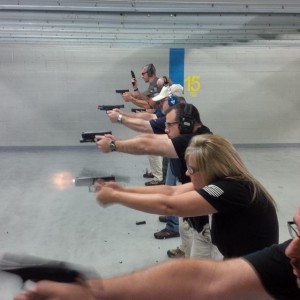 The shooting starts with the basics. Presentation from a high compressed ready position. Extend, touch the trigger, then press through till the shot breaks. If you’ve been taught the “Modern Technique of the Pistol” codified by Col. Jeff Cooper, then you will be quickly removed from your comfort zone. Rob teaches a very aggressive isosceles stance that is in tune with the bodies natural reaction to a threat stimulus and manages recoil effectively. He will not let you get away with an unlocked left arm. Single shots, then multiple shots. Extend! Touch! Press! Put it all together in one motion, then start presenting from the holster. Assess your environment after every engagement. Don’t just look around, gather and process information. Now add lateral motion. Practice emergency reloads without looking at the gun. Move when reloading. Shoot faster, but you have to get the hits. Balance of Speed and Precision. Don’t get into patterns. Vary shot strings and targets of different sizes with alpha-numeric identifiers. It will seem overwhelming at times and your ego will be bruised. Things you were so sure of may come into question. You may have been a runnin’ & gunnin’, tacticool bad ass and are now being yelled at to MOVE!, fumbling reloads, getting that weak arm slapped until its locked and hitting outside the target box. Very humbling to say the least and I’m paying for this?
The shooting starts with the basics. Presentation from a high compressed ready position. Extend, touch the trigger, then press through till the shot breaks. If you’ve been taught the “Modern Technique of the Pistol” codified by Col. Jeff Cooper, then you will be quickly removed from your comfort zone. Rob teaches a very aggressive isosceles stance that is in tune with the bodies natural reaction to a threat stimulus and manages recoil effectively. He will not let you get away with an unlocked left arm. Single shots, then multiple shots. Extend! Touch! Press! Put it all together in one motion, then start presenting from the holster. Assess your environment after every engagement. Don’t just look around, gather and process information. Now add lateral motion. Practice emergency reloads without looking at the gun. Move when reloading. Shoot faster, but you have to get the hits. Balance of Speed and Precision. Don’t get into patterns. Vary shot strings and targets of different sizes with alpha-numeric identifiers. It will seem overwhelming at times and your ego will be bruised. Things you were so sure of may come into question. You may have been a runnin’ & gunnin’, tacticool bad ass and are now being yelled at to MOVE!, fumbling reloads, getting that weak arm slapped until its locked and hitting outside the target box. Very humbling to say the least and I’m paying for this?
Yep. Rob is well schooled in adult learning theory. He seems to know how each student learns and adapts techniques to get the student to perform. He uses failures as a learning opportunity. He is quick to correct and cajole. He doesn’t belittle, but will leave no doubt you can do better and he expects better performance in the next drill. He is careful to make sure each student ends a drill correctly. Even if they have to repeat it. Pure psychology. Always end on something positive.
In two days you will NOT be an invincible gunfighter. In two days you will have been introduced to concepts and techniques that, with continued practice and evaluation, will increase your chances of surviving a dynamic critical incident. If you truly are that firearms professional, always willing to learn, then you need to take a Combat Focus Shooting Class.
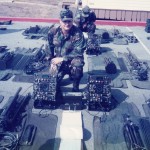 My Army MOS was 98G, Electronic Warfare Voice Intercept. I was also supposed to be a Korean linguist and understand North Korean military chatter. Fortunately for me, all this kept me around the Monterey Bay in CA for most of my enlistment, one of the prettiest places in the country. Yes, the US Army spent about a year teaching me Korean and never sent me to Korea. After attending the Defense Language Institute, I was stationed at Fort Ord, CA. The hi-tech equipment in the picture consisted of a radio receiver, direction finding processor, a signal analyzer/oscilloscope and a tripod mounted antenna array. Three briefcase size pieces and the antenna weighed over 100lbs (batteries not included!). As part of a “Light” infantry division, usually 3 of us would hump this, plus our regular weapons, ammo, food, water, batteries and maybe a sleeping bag up a hill, mountain or other high spot that gave us clear line of sight towards the “enemy”. After setting up the equipment we would spin the dial looking for traffic and report Frequency, Azimuth and tactical information. The receiver was basically FM and when we had downtime, or were just bored, we might wander down to 900Mhz and listen to whatever we could find. Most calls were in the clear without even simple inverted voice scrambling. We were told it was “illegal” to listen to private citizens’ conversations, but we entertained ourselves many a late night while on an exercise. I’m sure the NSA was listening then as well.
My Army MOS was 98G, Electronic Warfare Voice Intercept. I was also supposed to be a Korean linguist and understand North Korean military chatter. Fortunately for me, all this kept me around the Monterey Bay in CA for most of my enlistment, one of the prettiest places in the country. Yes, the US Army spent about a year teaching me Korean and never sent me to Korea. After attending the Defense Language Institute, I was stationed at Fort Ord, CA. The hi-tech equipment in the picture consisted of a radio receiver, direction finding processor, a signal analyzer/oscilloscope and a tripod mounted antenna array. Three briefcase size pieces and the antenna weighed over 100lbs (batteries not included!). As part of a “Light” infantry division, usually 3 of us would hump this, plus our regular weapons, ammo, food, water, batteries and maybe a sleeping bag up a hill, mountain or other high spot that gave us clear line of sight towards the “enemy”. After setting up the equipment we would spin the dial looking for traffic and report Frequency, Azimuth and tactical information. The receiver was basically FM and when we had downtime, or were just bored, we might wander down to 900Mhz and listen to whatever we could find. Most calls were in the clear without even simple inverted voice scrambling. We were told it was “illegal” to listen to private citizens’ conversations, but we entertained ourselves many a late night while on an exercise. I’m sure the NSA was listening then as well.
None of us were there that night Trayvon Martin was shot and killed. All we know is what George Zimmerman has said and the testimony of all those during his trial. My prediction is he will be found guilty of manslaughter. That gives the jury the compromise they can live with, even if they personally feel he was guilty of murder or just defending himself. In my opinion, George Zimmerman followed bad legal advice and strategy for his defense. My mentor and expert on lethal force shootings, Massad Ayoob, points out in his classes two very salient points related to self defense shootings. The first point is when selecting your lawyer. There are many good trial lawyers and a few excellent criminal defense lawyers. How many are good at defending innocent men? It is quite a different thing. The strategy and tools are different. In hindsight, I think an affirmative defense may have had a better chance. In claiming self defense you are saying, essentially, “I did what I did because I had to in order to save myself from ‘death or grievous bodily harm’ and YOU WOULD HAVE DONE THE SAME THING TOO! If you had been in my shoes.” On that premise, the defense has to really be on the offense to establish it’s points. Mr. Root was a poor witness and didn’t make clear the dynamics of a lethal force encounter. With the affirmative defense the goal would have been to educate the jury on the dynamics of a violent encounter and get them to understand/empathize with George Zimmerman. Understand that he was being assaulted and had a split second to decide what to do. There are no guarantees in the courtroom, but a traditional criminal defense counts on sullying credibility and debunking the prosecution’s theory of the crime. The decision not to testify was a mistake too. Not for a criminal trial where the accused more than likely,let’s be honest, did do something. In the affirmative defense it would be essential for the accused to stand up and exp-lain what he did and why he did it. He has nothing to hide. Yes, it’s a risk to put your client in front of the prosecutor and have to answer his questions, but that what all the pretrial time prep work is for. So, George made his decisions and his attorneys did their best. His fate is in the hands of the jury. Lessons learned? Avoid confrontation whenever possible. If you carry a firearm, get training in its use and just as important, get training in the legal aspects of violent encounters.
If you are interested in what our elite operators do and the sacrifices they make for us, then this book is right up your alley. No Easy Day is autobiographical and gives some insight into what makes and motivates someone to not just join the military, but strive to become one of the most elite special forces operatives we have: a Navy SEAL. The details of the raid that killed UBL are pretty good and you learn my personal motto: A plan is just a list of things that don’t happen. Knowing that from the start means having a plan B, C and D and knowing how to adapt to changing situations. If you are a hardware guy like me, then the book is a little light. He gives a description of his gear and weapons in general, but not the depth I would like. There was some controversy about classified operational details being divulged, but I didn’t read anything I hadn’t really heard about before. Everyone seems to be getting a ghost writer and putting their adventures in book form nowadays. I read a lot of them and this one rises above the average.
Ray Gorham is a new writer and he basically self-published this book and finally found some success by e-publishing it and putting it on Amazon. It’s a good read. I’ve been wallowing in a post apocalyptic world lately, reading a number of books and watching The Walking Dead. 77 Days is simply a man’s journey to get back to his family after an EMP (electromagnetic pulse) brings down the power grid and all normal communications. Unlike many books in this genre, there’s not a great deal of violence. Of course, people die and there is plenty of conflict, but the story tends to focus on man and his motivation to reunite with his family. Our hero is not an ex-special forces or ninja operator. He’s just an average guy with a grim determination to get back to those he loves. A quick, enjoyable read and it’s nice to support a new writer.
Trojan Horse is Mark Russinovich’s second novel dealing with the very current theme of computer hacking and cyber warfare. His first book Zero Day dealt with a terrorist release of a new computer virus. This book goes deeper and looks at trojans and the threat we face from malicious software that can embed itself in our most sensitive systems. The story is straight thriller with complex sub plots that keep you engaged. The strength of this book, and his first, is the way he explains some very geeky and complicated computer software operations. Whether a blackhat hacker or a computer newb, you’ll understand what is going on in a computer when infected with malware. If you know what “stuxnet” was/is and are into thrillers, this book will entertain you, make you update your AV defintions, run a scan, and do that back-up like you meant to.
I’ve been thinking of doing an article on knives for a while. My nephew posted a picture of his every day carry items and I have to one-up him and show everyone that good working knives are available and very affordable.
While in the Army back in the mid 1980’s, most of us didn’t really think much about knives as tools or defensive weapons. We had dull bayonets and many of us had some type of swiss army knife. I was partial to the simple Tinker model. Ever try to cut commo wire with a small, hard steel blade? Not a good idea. That blade is good for spreading peanut butter and little else now. Since then I’ve gone through any number of blades. As a simple civil servant, I didn’t have the resources to acquire custom forged blades of exotic metals and grip materials. My disposable funds were more likely spent on ammunition and guns to feed my IDPA and IPSC habits. Still I have managed to cobble together some quality knives at reasonable cost.Columbia River Knife and Tool has been making some of the most affordable blades for almost 20 years. They are known for their collaborations with some of the best custom makers extant. The Pat Crawford/Bob Kasper design was my first real folder and I liked it so much, I got another one with the partial serrations. One of these will always be with me in a Maxpedition man purse or the console of my truck. The Steve Ryan designed Ryan-7 is another handy folder that I liked.
You can’t go wrong with Spyderco. They patented the thumb hole and gave us that flick of the wrist opening we take for granted now. Some of my newest and oldest knives are by Spyderco. The old zytel handled serrated edged Delica is my oldest. This is my GP utility blade and is what I give my wonderful partner when she wants to open taped boxes or anything else. The stainless Deilca II is another GP blade I usually have handy. I find the stainless scales slippery when sweaty or wet. The Tenacious is big for a folder. I like the blade ergonomics and feel. Some question these Chinese Spyderco blades, but they are solid with good steel and G10 scales. You could do a lot worse for around $40.
Cold Steel is another top tier manufacturer. If there is something sharp involved, they probably make it. The Prolite is a robust liner lock available in may blade styles. I chose the tanto blade because I didn’t have one and wanted to test it out. Love it or hate it, the tanto has a place. The Urban pal is small and fits on my key chain. It is unobtrusive and handy to open mail and boxes. When a real knife can’t be found, the Urban Pal is handy to have around.
Kershaw and Ken Onion introduced the assisted opening blade. These are not automatic or switchblades, they just open really fast once you get them started. I really like the Blur. The grip and blade design just really work and I think it rather elegant to boot. The Gerber Crucial is just a small basic multi-tool. Just needle nosed pliers/wire cutter, partially serrated blade, plus your flat and phillips head screwdrivers. I like that all the tools use a liner lock to keep them open and there is a spring clip to hook it to your gear bag.
Now the knife most likely to be in my pocket these days is a Benchmade 580 Barrage. It is an assisted opening blade that uses the proprietary axis lock used by Benchmade. This is not an inexpensive knife, but is a lot cheaper than most custom folders. You can find very good knives for the cost of a couple of boxes of pistol ammunition and you can pay ten times more for a beautiful and functional custom creation. When it comes to knives, guns, and flashlights: one is none, two is one, and three (or more) is better.Let me know what you carry or collect.
I’ve been playing with computers since college in the 80’s. Fortran was the only programming language offered at W&J and we would sneak into the lab at night to play an ASCII based adventure game that was on the system’s four terminals. My first computer was a Commodore 64 and I used it mostly for games and played with the GEOS operating system. It had a GUI and all the features we’ve come to expect in a modern OS. In the early 1990’s I bought my first PC, an IBM with the then new Intel 486sx processor. It had 4 megabytes (not gigabytes) of RAM a 170MB hard drive, both 5.25 and 3.5 inch floppy drives and was capable of displaying 256 colors on its 13″ CRT. MS-DOS (5.0 Ithink) and Windows 3.1 were installed and it had a 2400 baud modem to connect to BBS systems. It came with a Prodigy trial account, but I soon joined Compuserve because it was where all the best computer and news groups were. Not able to leave things alone, I upgraded the RAM to 8mb at a cost of $50/mb, added an 8 bit sound card and bought a bunch of little video memory chips that plugged into the motherboard to give me 65,000 colors when playing games. Since it had a 486sx CPU and Intel came out with math co-processor chips to boost performance (actually just DX chips) and I even put in their DX-2 chip when available to double the clock speed. Since then I have built and upgraded systems for myself and learned all about ISA and VESA local bus, memory managers, IRQ conflicts, editing autoexec.bat/config.sys/win.ini/sys.ini files ad nauseum. Finally computer power grew to the point where the games and things I was doing didn’t require constant attention and upgrades. for the past 4 years or so, I was getting by with a refurbished HP 8120n. It had a quadcore Q6600 cpu and I only bumped up the RAM to 4GB and upgraded the videocard twice over the years. Being an HP system it didn’t have the parts I would have chosen, but it was a good deal at the time and it did yeoman service as I have said for 4 years. Well once I retired I thought I should build myself a new computer that will do anything I can think of now and for the next 4 or 5 years.
Sound and video editing are the biggest tasks my new machine may be asked to do. With smart phones and the iPad capable of making HD video, the home movie is getting quite the makeover and everyone seems to be putting their creations on Youtube, so why not me? I have time to play more games and I think I might try Skyrim or the latest in the Call of Duty franchise. These things can tax the CPU and the video subsystem to a great extent. I’ve always tried to get the best bang for my buck and this build is no different. My significant other has given me that look that means “I don’t understand it, but if it makes you happy, go ahead. Just don’t go too far overboard with it.” I could have worse vices, I suppose. After much research I came up with the spec’s and my choice of parts. Intel or AMD? Intel of course. AMD makes good low end CPU’s, but nothing they have can compare clock for clock with Intel.
Next decision was what socket, 2011 or 1155? 2011 is the newest and may have the longest projected lifespan, but there are only something like 3 current CPU’s for the socket and they cost from $300 to over $1000. Socket 1155 will be around for the next couple of generations of CPU’s I think and will take the latest Ivy Bridge parts today. So, it will be socket 1155, but what motherboard and CPU? Looked at MSI, Asrock and Gigagyte boards and they each have good boards and comparable features. I finally chose the Gigabyte Z77X-UD5H-WB due to it’s heavy duty PCB, dual gigabit LAN ports, plethora of USB 3.0, esata and SATA III ports. I got the version with a wi-fi/bluetooth add-in card because I need wi-fi to connect with our downstairs router to which all the network entertainment components (Onkyo Receiver, Roku, Blu-ray, home theater PC) are hardwired. I chose a middle of the road CPU, the Intel 3570K. It is a Core I-5 quadcore part that runs at 3.4Ghz. It is unlocked, so can be easily overclocked, if I choose to go there. It screams compared to the old Q6600 (and it was no slouch). I went with an aftermarket CPU cooler because the stock coolers are loud and keep the CPU from overheating, but just barely. The Cooler Master Hyper 212 plus is huge, but it’s big fan turns slower, cools much better and makes less noise. I have read people have overclocked this CPU to almost 5Ghz using this same cooler. A $10 rebate made it more attractive as well. To power the board and CPU I got a Corsair 700 watt modular power supply. Modular means only the connections I need are used and there are no unwanted power cables to keep out of the way(btw, it had a $30 rebate).
RAM is about as cheap as it has been for some time. I went overboard and maxed the board out with 32GB of DDR3 1600 from G.Skill. With that amount I can play with RAM disks and shouldn’t have to worry about page files and virtual memory. The Ivy Bridge CPU’s have Intel’s latest integrated HD 4000 graphics. This is much better than the 3000 and 2500 of previous Sandy Bridge and earlier CPU’s. However, they cannot compete with a discreet add-in video card. Again, I went middle of the road and got an AMD Radeon HD7770 Gigahertz Edition made by Sapphire ($15 rebate). With my BenQ 24″ monitor, it will drive all the games I like at the highest detail levels. Graphics cards are the easiest thing to upgrade and about the only thing I might over the next few years. Internal storage is handled by a 240GB Corsair SSD ($30 rebate) and an older 256GB Samsung SSD I got from a geek on Craigslist for $100 when he wanted a bigger SSD. Once you go SSD, you’ll never want to go back to waiting for that spinning hard drive to read and load the operating system on boot. For data and internal backup I have two 1TB drives in a RAID 1 mirror.
All this is stuffed in an inexpensive Rosewill Challenger case. I added an LG Blu-ray reader/DVD burner and another DVD burner I had lying around just in case I want to copy and burn at the same time. The build went pretty smoothly. I suggest adding as many components as you can before mounting the motherboard into the case. Once in, things get cramped and my short stubby fingers have a hard time plugging things in. Installing Windows 7 Ultimate was easy and restoring my data from the Drobo held no surprises. I’m still tweaking settings and deciding what programs I really use and not installing things I don’t need. This is fun for me. Some folks like to plant flowers. Let’s see how long I can go before the adding something new. Please share your computer stories, I’d love to hear them good or bad.
A local sportsman club held an IDPA BUG (Back Up Gun) match this month and it served as a very useful training experience. The International Defensive Pistol Association (www.idpa.com) was prescient enough to realize that many people who carry firearms on a regular basis do not always, and some rarely, carry full size service pistols or revolvers on their person and they created the back up gun (BUG) division, so local clubs could allow smaller weapons and calibers in competition. I regularly compete in Stock Service Revolver with a 4 inch Smith & Wesson 686 or in Custom Defensive Pistol with my Wilson Combat CQB 1911. For the BUG match I used my 2 inch barreled Taurus model 85 Ultra-Lite in .38 special. It is similar to any J-frame S&W and will fit in most holsters made for the J-frame. I normally carry the Taurus in a front pocket where its small size and light weight make it virtually unnoticeable. Safety rules won’t permit draws from a pocket, so I dug out an old Galco pancake style holster I’ve had for years.
The pancake design keeps the gun close to the body and completely covers the trigger guard. Working with it on the belt reinforces one key safety practice: Keep your finger away from the trigger when reholstering! IDPA rules say all BUG strings of fire should be no more than 5 rounds and reloads are to be off the clock. Fortunately, reloads were part of most of the stages and your reloading skills were tested repeatedly. Small revolvers with short barrels and shorter ejector rods will truly test your technique. Grip design can interfere with spent cases cleanly falling away. You must get the cylinder vertical and hit the ejector smartly to ensure a clean reload. I used HKS speadloaders and Bianchi speedstrips throughout the match. These I carried in the strong side pocket of my concealment vest. The weight in the pocket also helped me clear the vest when drawing. Revolvers will always be slower to reload than a modern semi-auto and is something a wheelgunner learns to live with. The match itself tested many gun handling and shooting skills. Safely loading, unloading, drawing and reholstering small guns stresses muzzle awareness. It is all too easy to let a finger or hand get in front of the barrel and that would be an instant disqualification. I’m glad to say no one was DQ’d. There were dominant and non-dominant hand only strings of fire, shooting while advancing and retreating, as well as several “swingers” and steel poppers. Use of cover was emphasized and there was one kneeling stage which is always hard on my aged knees. The club has a 360 degree shoothouse and they always make a challenging scenario that each shooter has to run “blind”. The targets have guns on the bad guys and guns and badges on some good guys and be careful or you might shoot the guy with the coke bottle like I did. Negotiating doors and hall ways and making shoot/don’t shoot decisions is good practice, if only to make you realize that attempting to clear an unknown (or even a known) structure is a losing proposition and should be undertaken only in the most desperate of circumstances.Lessons learned? You can never practice enough with your equipment. Little guns are harder to master. Short barrels, small sights and grips are a challenge. We like the compact and lightweight package, but that means short sight radius and more recoil with any load. I shot Speer Lawman 135gr. TMJ and even these mild loads barked in the lightweight Taurus. With small revolvers I alter my grip to clamp my support thumb over the knuckle of the thumb gripping the revolver. This locks my hands together and keeps both thumbs away from the trigger guard and the possibility of interfering with the trigger finger.
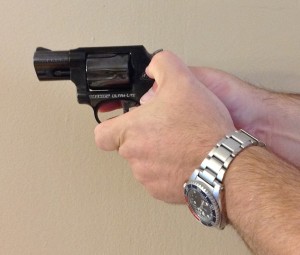
J-frame grip: note support thumb clamped over gripping thumb and use of “Ayoob” wedge under trigger guard.
All in all the BUG match was fun and a great learning experience. I have confidence in my skills and also know I can improve on them with dedicated practice. I would encourage any competitor to shoot a BUG match or shoot a regular match with their BUG. You’ll learn a lot and increase your skill and confidence with the tools you may one day be called upon to use to save yourself, a loved one, or another innocent from a violent attack. I’d like to thank the folks at the West Shore Sportsmen’s Association (www.westshoresportsmen.org/) and the guys and gals at Sights (www.sightspracticalshooter.com/) for all the work they put in designing and setting up this match and their monthly IDPA matches throughout the year.
How do you get Liam Neeson and Ralph Fiennes to do such a bad movie? They must have used all their talent to keep from laughing when doing their scenes. I don’t get Sam Worthington as a hero either, let alone the son of Zeus. Despite the universal panning of Clash of the Titans, it must have made enough to greenlight this uninspiring 3D extravaganza. The effects are all there and they take up almost the entire movie. Even eye candy gets boring after 45 minutes. There just isn’t anything to care about. The characters are too one dimensional and undeveloped. I was hoping for more and got less. The best part of the movie was the trailer for “The Hobbit” that I hadn’t seen before. At least I have something to look forward to.
You shouldn’t complain when you get what you ask for. I had hopes this would be better than it was, but it wasn’t. I expected sophomoric humor and there was plenty. Lots of cursing and penis jokes, but nothing too clever. Jonah Hill has great comic timing, but the script lacks wit and fresh material. We’ve seen it all from Porky’s, American Pie and every buddy cop movie like Rush Hour and Beverly Hills Cop. Making references to the original TV show is cute once or twice, but it can’t carry a motion picture. Cameos by the original stars aren’t enough either. This is a movie for teenage boys and I’m just too old I guess.
I got the Kindle Keyboard last year and have been loving it. I have read books on my iPod Touch and it was a bit tedious with the small screen and the back lit screen is tiring on the eyes. looking at all the others I decided Amazon had the best selection and has the resources to dominate the e-book market. You may not like their tactics, but I think the Kindle will be around for some time. The Nook and other devices I’m not so sure of. Anyway the Kindle is great at one thing: displaying readable text in a light and handy device. The e-ink disply is crisp from tiny point sizes to optical reader size for the legally blind. The page is refresh is quick and not too distracting. There is a sort of flash or blink as each page changes. It annoys some folks, but not me. There are a host of other feature as well. With the keyboard you can annotate and bookmark as you read, which I have never done and can’t see myself doing, but some folks may find it useful. The text to speech feature works, but I don’t see me listening to a robotic voice read me a Stephen King novel. That it has speakers is nice as it can function as a media player. With only 8 gigs of storage you can’t put everything you own on it, but for a short trip when you don’t want to carry your iPod or laptop, you can store some entertainment on it. I got the 3G version because I still refuse to get a smart phone and pay an additional data fee to my arch enemy, Verizon. With the Kindle I can sort of connect to the internet and get directions or check an email in an emergency. It has to be an emergency because the navigation capabilities are very limited. You have a 4-way switch and some arrow keys. It can be done, but it’s not fun. That you can read a web page at all is surprising, but the e-ink display can render a remarkably precise graphics and readable fonts. Battery life is scary. If you keep the wi-fi off, it’ll last weeks and weeks on a charge. I turn on the wi-fi every few days to get new books and check the special offers that are another interesting aspect of the Kindle. I recommend getting the special offer version of any Kindle model. They are great! I got the $50 case w/ booklight for half price and there’s are monthly $1 book deals. Sure, it’s Amazon’s way to make more money from you, but if you plan on buying books anyway, why not take advantage of the special deals. There are simple games like Boggle, Blackjack, and Yachtzee, that can help while away the time on the beach or on a trip. Don’t get me wrong, I love books. I really love books and I have way too many (just ask my Significant Other). The kindle allows me to keep in one place an electronic version of many classic works (free by the way) I have on the shelf, but don’t want to carry around. If you are thinking about taking the plunge there are several Kindle types available. I’d stay away from the “touch” versions as the IR touch system seems to be getting panned by many folks. The Fire is a tablet device and is great for what it is and it can do web browsing like any real computer. The $79 basic Kindle may be perfect for most folks. It is the essential Kindle doing what it does best, displaying readable text. It doesn’t have speakers, so it won’t be your portable media device, but many people won’t care about that. E-books are here and you should take a look at them.
